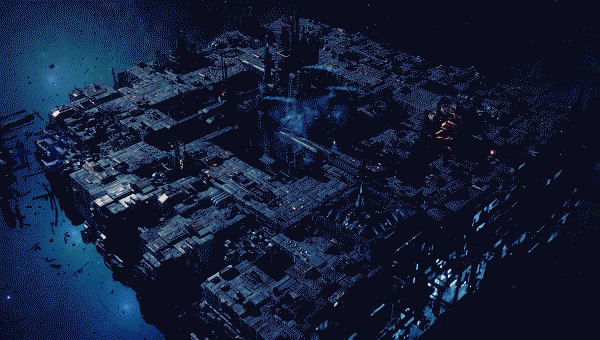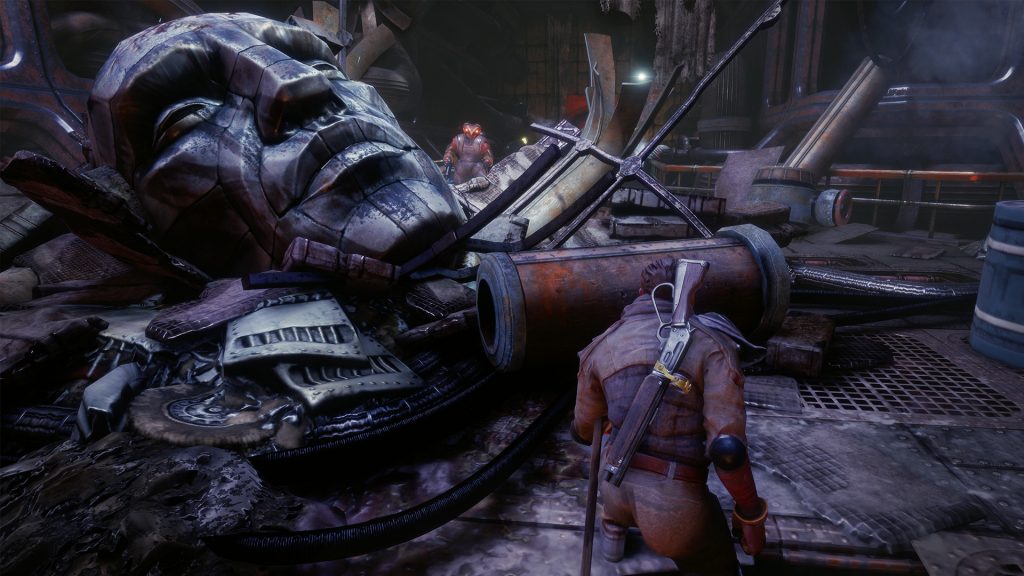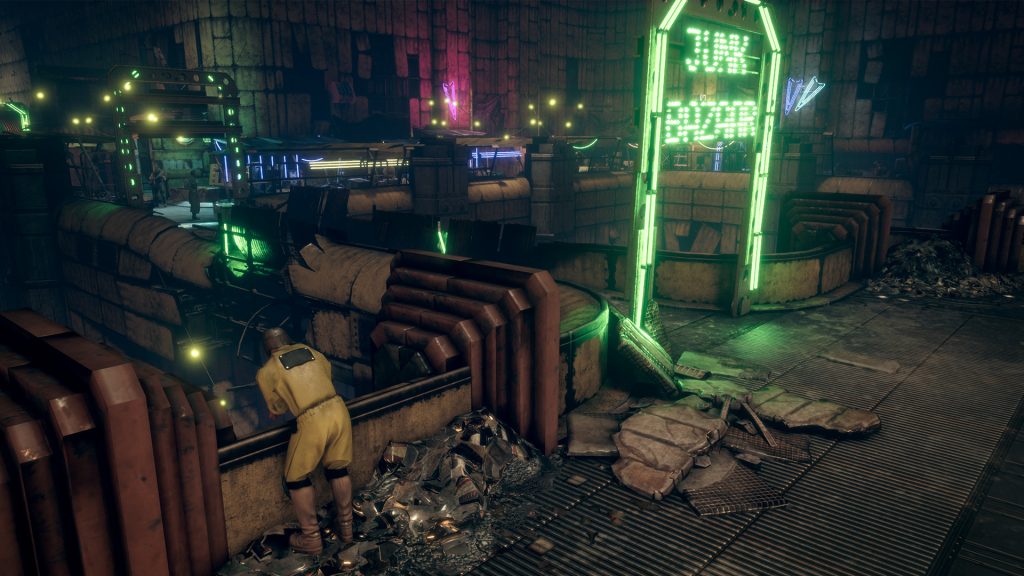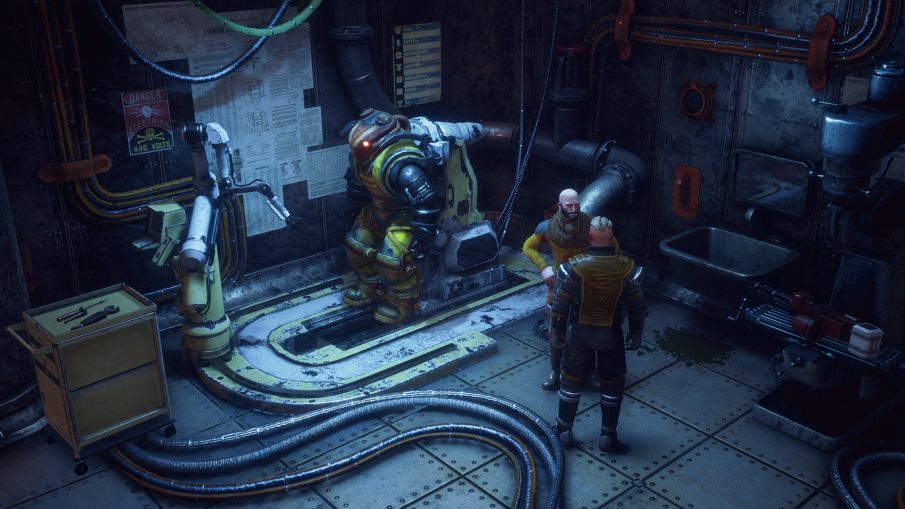-
PC
I recently waffled in a Scrye about INSOMNIA: The Ark, written calmly henceforth as Insomnia. It’s quite the thing, especially if you go in blind. Given that you’re reading this, I suspect there’s a forfeiture of surprise in your immediate future, but that doesn’t detract from Insomnia’s beguiling premise overcoming its somewhat flawed execution. Flawed, I hasten to add, in that Eastern Bloc way. An ambitious pursuit of atmosphere; a journey through time and space, anchored to a colossal star city, where dimensions appear to be a lot less demarcated than first thought.
Insomnia does feel like it comes from the late 2000s. The era of Cryostasis, of STALKER et al. A gestalt of particularly PC experiences that went bonkers with atmosphere. Games that didn’t mind thumbing the enemy encounter toggle way down and rendering an ornate world that wasn’t justified by its target count. A world that wasn’t hugely interested in you as some sort of saviour figure.
This is also true in Insomnia. It doesn’t care much about you, a defrosted member of the Ark’s cryogenic stash. Just another grunt press-ganged into the local military as the city flies through the cosmos, in search of a new home.

The prologue tutorial offers up its curious third-person adventuring and combat. Its roots originally as an isometric RPG carry over in an odd way, as you can’t tilt the camera. However, most other third-person mechanical faculties are intact. Shooting is the only slight divergence, as the aiming reticule offers an interesting free-floating on the vertical axis. As such, panning is fine, but you have to track your targets solely by reticule, rather than having the camera focus on whatever you’re aiming at. Can be a little confusing in the heat of battle, especially when the reticule colour becomes indistinguishable from the environment.
It sounds clunky, and sometimes it is, but it works.
The world of the Ark itself is a fascinating one, and something I was utterly blindsided by. Bioshockian inspirations blend Deco with a dark, Fallout-esque clank. A fractured civilisation cocooned in a vacuum, itself a incremental binary of the Haves and Have-nots. Inexplicable inclusions of terrestrial road networks present a station that wasn’t so much built, but scalloped from a dying Earth and punted into deep space. Soviet chic abounds. Raygun Gothic creeps.

In classic Russian ambition, Insomnia is not content to keep it corporeal. There’s a weird and wonderful hallucinatory reality bleed-through throughout, again recalling games like Cryostasis’ atemporal vignettes or the ghosts of Metro. Insomnia nests much of its fiction in a cryogenic malady called Somnia. The ramifications are immense within the spaceborne sarcophagus built on a finite labour stockpile of frozen colonists, pulled from the rack when a hole needs to be filled. The Somnia affliction remains a serious existential threat, and it’s a compelling one.
There are over ten branching storylines throughout Insomnia, each a webwork of quests and missions. It’s actually quite hard to parse where the forks occur, which bodes well for repeat playthroughs that don’t turn on signaled ‘events’. Both the main quests and the immense litany of sidequests have you shift to an overview of the giant conurb, plotting movement to outpost or mission markers in the same way as Fallout or Jagged Alliance. There are interrupts here and there, but not all combat-related. You might happen upon a roving band of merchants, or a random quest might pop.
Insomnia is obviously not flawless, sometimes buckling under the weight of its own enthusiasm. There are a few localisation kinks still to be worked out at the time of writing, including still-untranslated Yes/No buttons in the inventory and merchant screens. Niggles with inventory management abound, such as not being able to automatically sort merchant wares! You often have to play tetris with salesfolk to fit your item in their backpack. You’d also assume that exiting and returning to the merchant’s inventory would automatically sort the stock, but sadly, placement exudes an odd permanence. Inventory is littered with odd little quirks like this, but it’s not a huge deal.

There might be other elements that stick out, such as an oddly static world. You won’t see much dynamic NPC movement outside of combat. Lots of standing or sitting around, perhaps a hangover from its isometric conception. I’d love to see NPCs come and go, selling the idea that this is indeed Russia’s gaming answer to Kowloon Walled City. A hive of activity; of vendors and mercenaries, of scum and fascists, mystics and cybernetic drifters. I mean, they’re all there, but the lack of incidental movement on a grander scale infers a sort of fatalistic indifference. Here I sit, or stand, and here I stay. It doesn’t matter now.
Insomnia hasn’t received a particularly warm welcome, but especially in an age where Bethesda can strip-mine the core from an RPG and sell its eviscerated corpse as a fresh experience, Insomnia is genuine and undeniably interesting.
The game is in my head. I think about it a lot, in the same way I did for all those other Russian or Ukrainian games. The noir soundtrack submerges everything in an endless nocturne. No natural light here, beyond faint, stippled starlight through armoured glass. Somnia is the price you pay for a gentle breeze.
Recommended.



This reminds me of Pathologic, which I still have somewhere on a CD.
Yeah, big Pathologic vibes, too. Those intoxicating eastern traits.